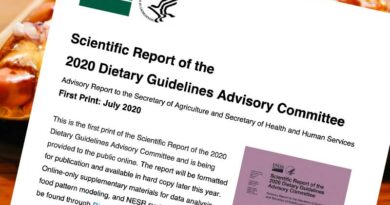Diet for Type 2 Diabetes (DiRECT)
Other than finding a cure for cancer, there is probably no greater prize in healthcare than curing Type 2 Diabetes. The most recent World Health Organisation statistics (November 2017) reported that there were 422 million people with diabetes in 2014 and 400 million of these will have type 2 (Ref 1). The healthcare prize, of course, is of no benefit to pharmaceutical companies or manufacturers of junk food. The prize would benefit 400 million individuals and their families and stretched healthcare systems worldwide.
Terminology is important. There is no cure for Type 2 Diabetes and there may never be one. However, Type 2 Diabetes (T2D) can be put into remission, or reversed, whichever word you prefer. The person with T2D still has T2D, but dietary intervention can reverse all signs of T2D such that the person would not be diagnosed with T2D if they walked into a clinic today. If that person resumed the lifestyle that brought on T2D, T2D would return.
Options for reversing T2D
The article that really put T2D remission on the map was the DiRECT (Diabetes Remission Clinical Trial) study published in The Lancet in December 2017 (Ref 2). As I reported in my review of that Lancet article (Ref 3), there were earlier articles that should have earned this accolade (Ref 4), but there does seem to be an unhelpful prejudice against low carbohydrate evidence in the academic and public health world. I suspect that this is because conventional thinkers cannot reject their hypothesis that fat is bad (and lower carb means higher fat, because protein is fairly constant).
My review reported that there are currently three evidence-based methods for reversing T2D:
1) Bariatric surgery;
2) A very low calorie diet (which, as my review showed, is also a low carbohydrate diet – below 130g/day);
3) A low carbohydrate diet.
The diet intervention in The Lancet study was 3-5 months of liquid meal replacements, providing approximately 800 calories a day. There were no details in the article about the food reintroduction phase (of 2-8 weeks) or the “ongoing structured programme for long-term weight loss maintenance” thereafter. The structured food reintroduction phase was reported to contain “about 50% carbohydrate, 35% total fat, and 15% protein.” That was the only information provided.
This is the first of a two-part review of the DiRECT diet – beyond the liquid phase. During this article and next week’s, I am going to challenge the validity of this “50% carbohydrate, 35% total fat, and 15% protein” macronutrient claim.
Following my post on The Lancet article, a number of doctors and health practitioners contacted me to express interest in the diet used in the study, beyond the very low calorie liquid phase. I was already in correspondence with the corresponding author, Professor Roy Taylor, and a research assistant at Newcastle University (the institution that has been leading the work on low calorie diets and T2D). I’ll share the exchanges in this note, alongside two publications from the past week, which add to our body of knowledge about low calorie diet interventions for T2D.
The first of these recent publications was a feature in a British newspaper, the Mail on Sunday, written by Professor Roy Taylor giving further details of the diet that he recommends (Ref 5). The second publication was a conference extract about a study by Oxford University researchers, which had been presented at a cardiology conference in Spain (Ref 6). We’ll come to that one later.
The diet in the Lancet study
My query to Professor Roy Taylor was:
“Please do you have any further information on the diet administered after the Counterweight programme? The article states ‘... followed by structured food reintroduction of 2–8 weeks (about 50% carbohydrate, 35% total fat, and 15% protein), and an ongoing structured programme with monthly visits for long-term weight loss maintenance.’
“I'm interested to know the calorie and food intake for the 2-8 week period and thereafter and any dietary advice given to the intervention group.”
The rest of this article is available to site subscribers, who get access to all articles plus a weekly newsletter.
To continue reading, please login below or sign up for a subscription. Thank you.




